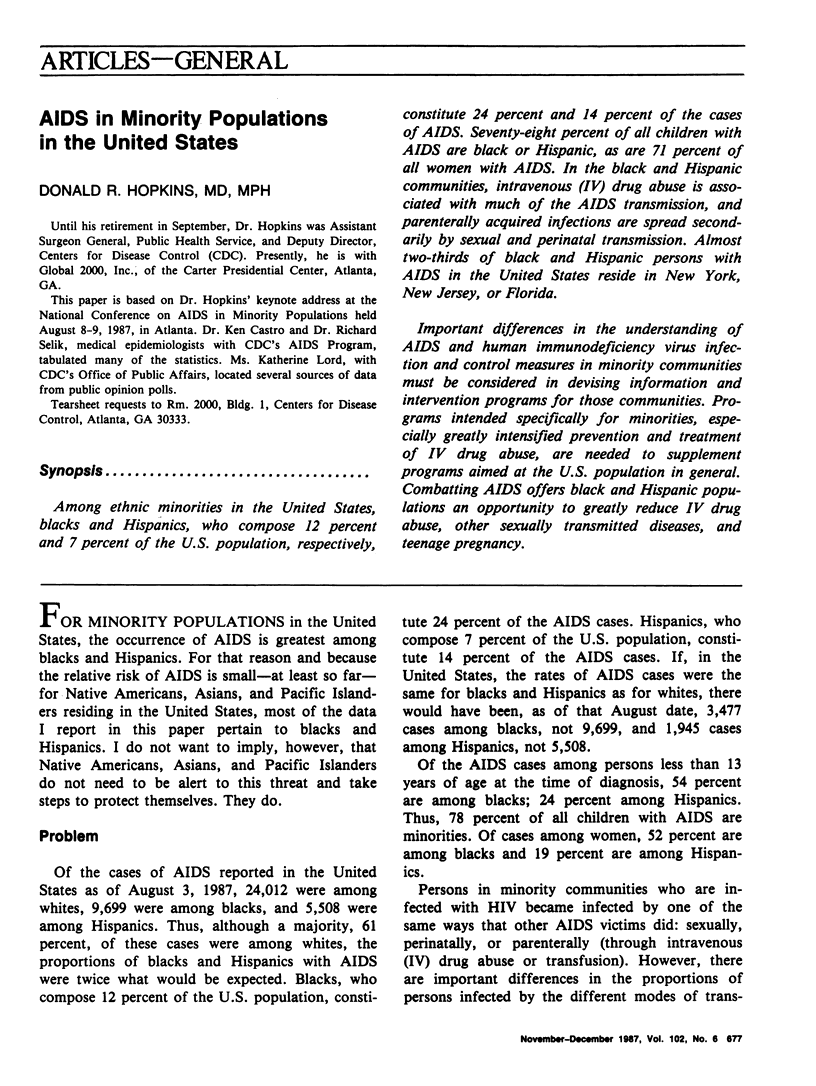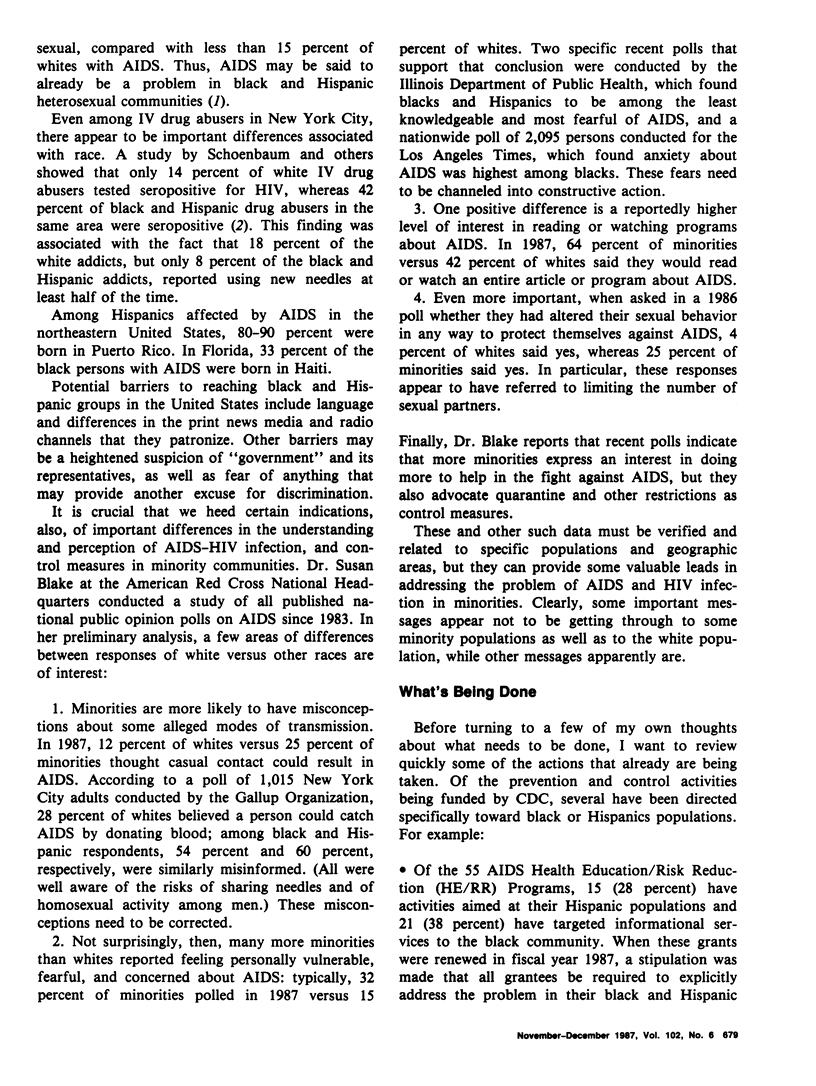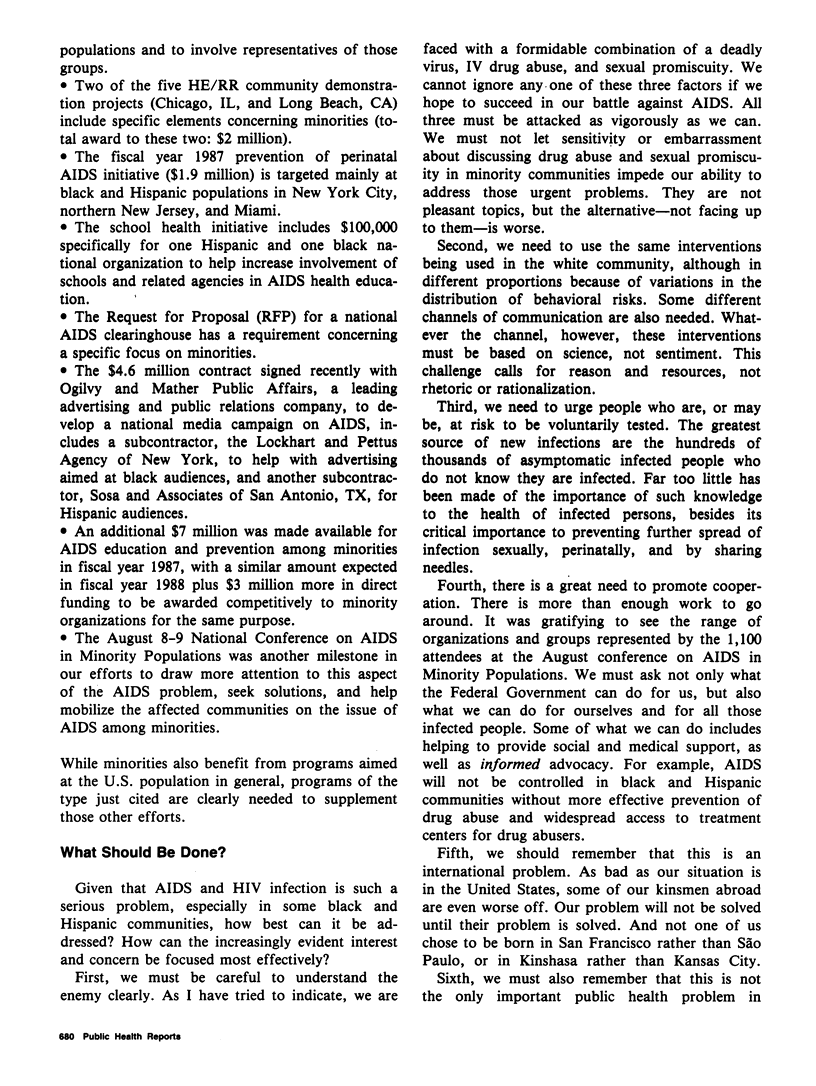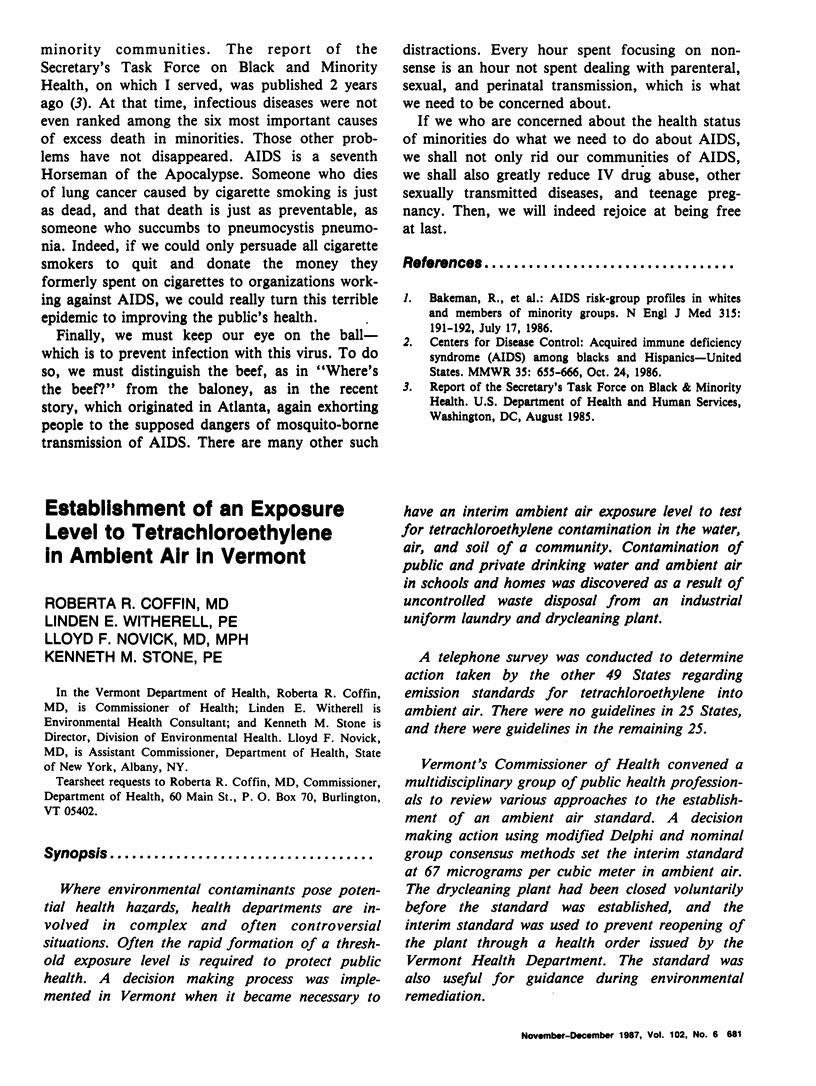Abstract
Among ethnic minorities in the United States, blacks and Hispanics, who compose 12 percent and 7 percent of the U.S. population, respectively, constitute 24 percent and 14 percent of the cases of AIDS. Seventy-eight percent of all children with AIDS are black or Hispanic, as are 71 percent of all women with AIDS. In the black and Hispanic communities, intravenous (IV) drug abuse is associated with much of the AIDS transmission, and parenterally acquired infections are spread secondarily by sexual and perinatal transmission. Almost two-thirds of black and Hispanic persons with AIDS in the United States reside in New York, New Jersey, or Florida. Important differences in the understanding of AIDS and human immunodeficiency virus infection and control measures in minority communities must be considered in devising information and intervention programs for those communities. Programs intended specifically for minorities, especially greatly intensified prevention and treatment of IV drugs abuse, are needed to supplement programs aimed at the U.S. population in general. Combatting AIDS offers black and Hispanic populations an opportunity to greatly reduce IV drug abuse, other sexually transmitted diseases, and teenage pregnancy.
Full text
PDF




Selected References
These references are in PubMed. This may not be the complete list of references from this article.
- Bakeman R., Lumb J. R., Jackson R. E., Smith D. W. AIDS risk-group profiles in whites and members of minority groups. N Engl J Med. 1986 Jul 17;315(3):191–192. doi: 10.1056/NEJM198607173150312. [DOI] [PubMed] [Google Scholar]


